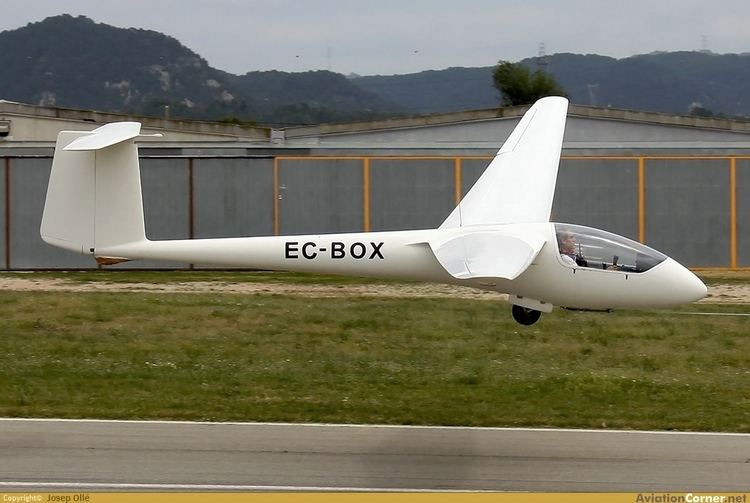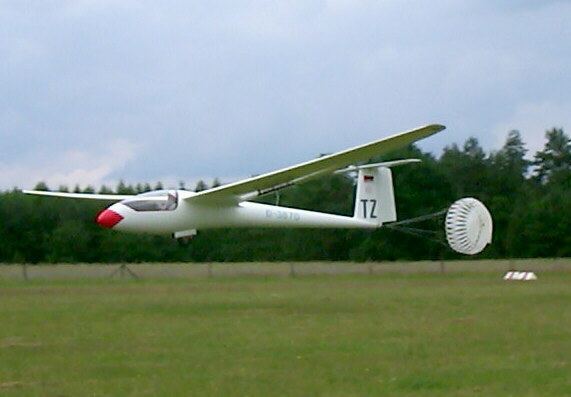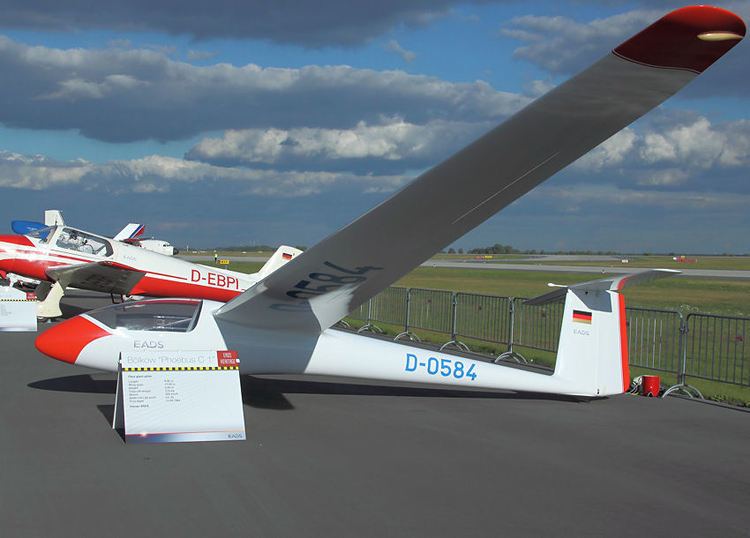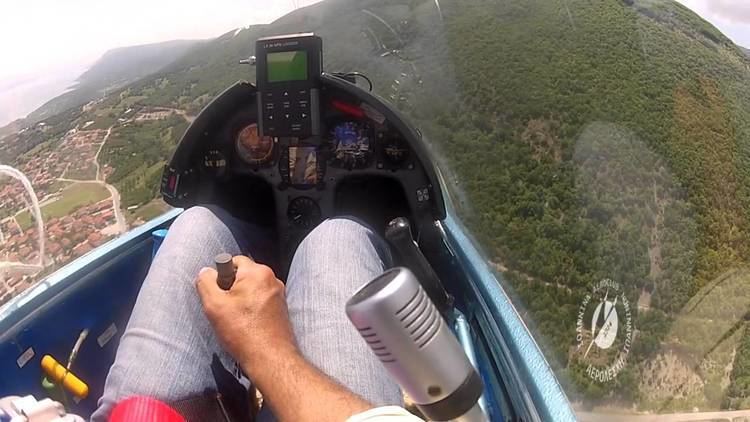Top speed 200 km/h Length 7.1 m | Wingspan 15 m First flight 1964 | |
 | ||
The Bölkow Phoebus is a glass fibre composite competition sailplane, designed and produced in Germany in the 1960s. Large numbers were built, achieving success at some national contests, and many remain active.
Contents

Design and development

The Phoebus was designed at a time when glider manufacturers were moving away from all-wood aircraft towards composite structures. Bölkow had been amongst the early leaders of this change with their Phönix T sailplane in the late 1950s, which used balsa/glassfibre sandwich construction. The Phoebus was built in the same way.

It is a shoulder wing competition sailplane. The first aircraft, the Phoebus A, was designed to Standard Class rules, with a span of 15 m. Its straight tapered wings have an aspect ratio of 17.1; airbrakes are fitted at 70% chord. The fin and rudder are straight edged and only slightly tapered, with a high aspect ratio all moving T tail mounted at the tip. The fuselage is a monocoque. with the cockpit, ahead of the wings, enclosed with a one piece canopy. The Phoebus A has a monowheel plus tail bumper undercarriage, but in the later variants the main wheel is retractable. The Phoebus C has a braking parachute.
Operational history

The Phoebus prototype was placed 3rd in the Standard Class at the German national gliding championships of 1964 and 8th at the World Gliding Championships held in the United Kingdom the following year. Production aircraft came 1st and 3rd at the 1966 South African international championships.
Many Phoebus remain registered, particularly in Germany and the United States.
Variants

Specifications (Phoebus A)
Data from Jane's All the World's Aircraft 1966/7
General characteristics
Performance
Phoebus B is same as A model except has retractable landing gear. Phoebus C is the same as B model except has 17 meter wing span, did not have tail mounted braking parachute.
